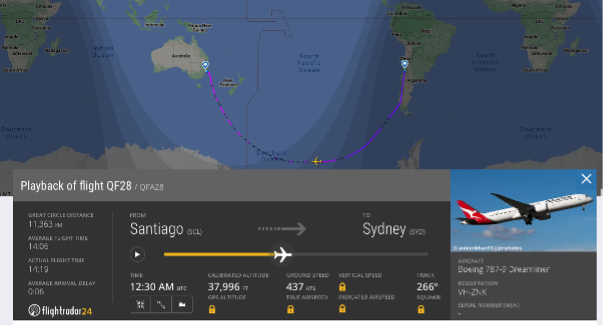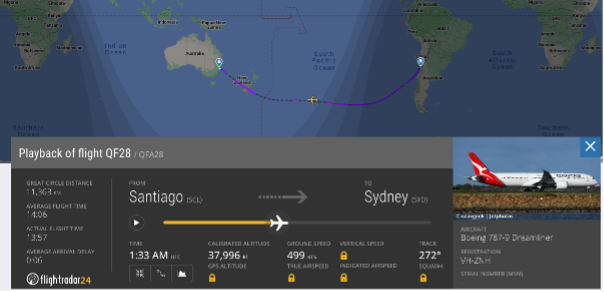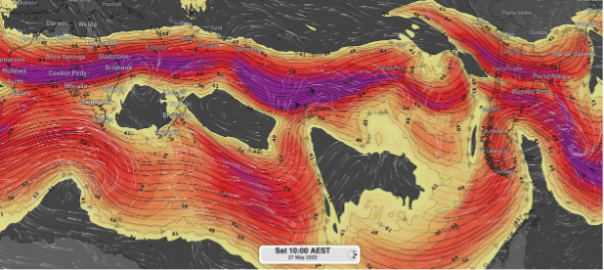How does the southern hemisphere jet stream impact flights?
As winter approaches, the polar jet stream is trapping cold air in Antarctic latitudes, separating the warmer subtropical air from the frigid wintry temperatures by a boundary of strong westerly winds high in the atmosphere. Because the temperature difference is so large, these winds can blow up to 300km/h at around 60 degrees south of the equator.
This begs the question: how are planes impacted by the jet stream? As an example, let’s look at Qantas flight (QF) 28 from Santiago, Chile to Sydney, Australia non-stop, which operates once every 1-2 days return. This is one of very few flights that cross the entirety of the South Pacific Ocean. Airlines tend to avoid trans-South Pacific flights due to their isolation.


Figure 1: QF28 en route to Sydney from Santiago, on May 19th (top) and May 21st (bottom) (Source: flightradar24.com).
Pilots must check weather forecasts from aviation meteorologists to find the most optimal, fuel-efficient route that will spend the least amount of time battling headwinds, which can slow down aircraft significantly. Figure 1 shows the different routes taken on two different days due to the position of the strongest jet stream (head)winds. And guess what – the top flight is only about 20 minutes longer than the bottom flight... great job, pilots and meteorologists!

Figure 2: Wind speeds at about 38,000 feet (approximate altitude of aircraft) as at 10am AEST on May 27th using the Fri 12Z ECMWF model. Australia is on the left; South America is on the right; Antarctica is on the bottom of the figure (Source: Weatherzone, 2023).
Figure 2 shows the wind speeds at the approximate altitude of the aircraft. As of writing this story, QF28 is currently en route to Sydney and due for arrival at 6pm AEST. Can you see the path it would most likely take, if red and purple indicate very strong jet stream headwinds?
What about flights heading the other way, from Sydney to Santiago? Well, because the jet stream winds move from west to east, these flights get a ‘boost’, and don’t have to worry near as much about extreme headwinds. To put this into perspective, the east-bound route is about 12 hours long, whilst the west-bound route is 14 hours long.
Other similar long-haul flights that currently run are the non-stop routes from Sydney to Johannesburg and Auckland to Santiago. Historically, Qantas flew from Sydney to Buenos Aires, but this has been discontinued.
So next time you’re in a plane flying somewhere, think about the delicate planning involved in your safe arrival. Perhaps you'll tolerate the small bumps and turbulence you’ll feel along the way.